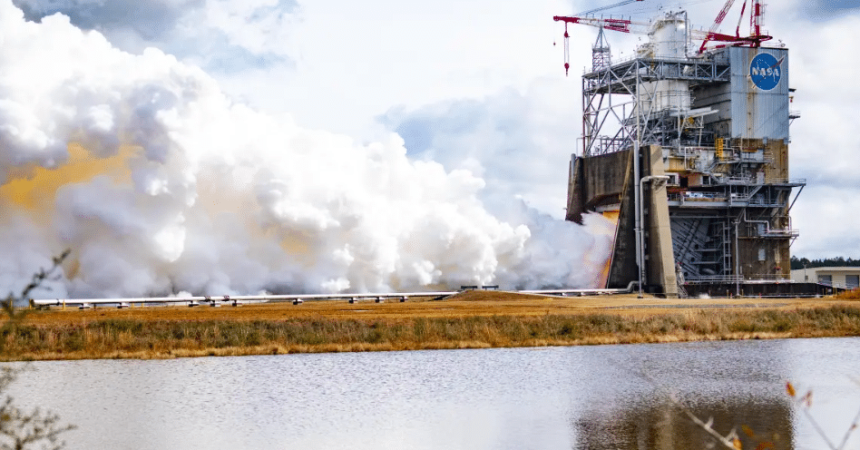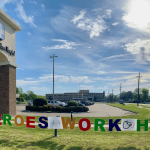NASA has reached the midway point of its rocket engine certification series for its Artemis moon mission.
On Saturday, NASA completed the sixth of 12 scheduled RS-25 engine certification tests in a critical series for future flights of the agency’s Space Launch System (SLS) rocket as engineers conducted a full-duration hot fire at Stennis Space Center near Bay St. Louis.

The current series builds on previous hot fire testing conducted at NASA Stennis to help certify the production of new RS-25 engines by lead contractor Aerojet Rocketdyne — an L3 Harris Technologies company. The new engines will help power NASA’s SLS rocket on future Artemis missions to the moon and beyond, beginning with Artemis V.
Operators fired the RS-25 engine on the Fred Haise Test Stand for almost 8.5 minutes – the same amount of time needed to help launch SLS – and at power levels ranging between 80% to 113%. New RS-25 engines will power up to the 111% level to provide additional thrust for the launch of SLS. Testing up to the 113% power level provides a margin of operational safety.
Now at the halfway point in the series, teams will install a new certification nozzle on the engine. Installation of the new nozzle will allow engineers to gather additional performance data from a second production unit. Following installation in February, testing will resume at Stennis to round out the test series with six hot fires in March.
For each Artemis mission, four RS-25 engines and a pair of solid rocket boosters power the SLS, producing more than 8.8 million pounds of thrust at liftoff. Under NASA’s Artemis campaign, the agency will establish the foundation for long-term scientific exploration on the Moon, land the first woman, the first person of color, and its first international partner astronaut on the lunar surface, and prepare for human expeditions to Mars for the benefit of all.







